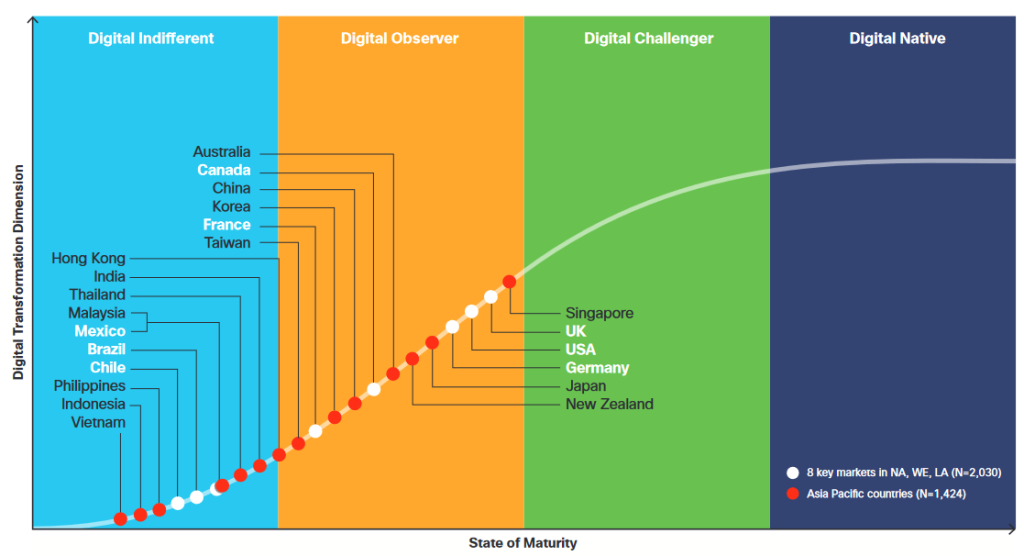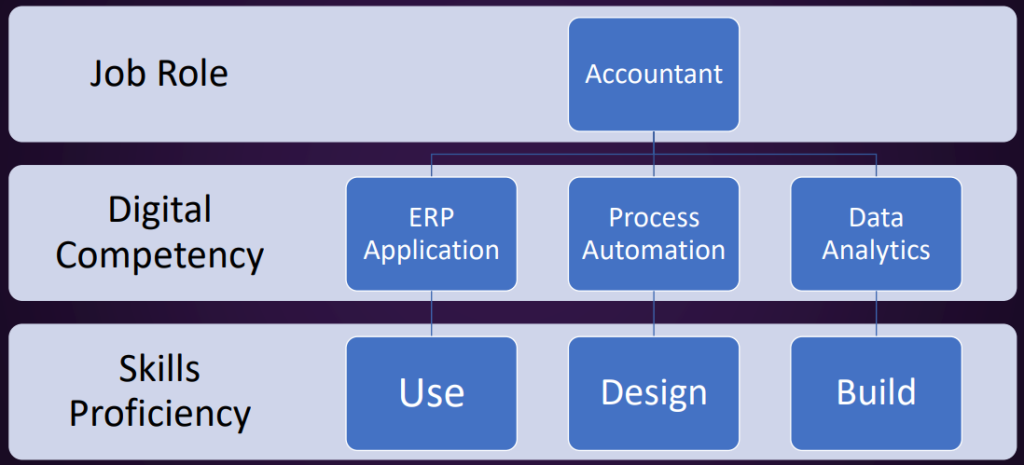
Digital transformation has been knocking on the doors of businesses, irrespective of their sizes. However, it’s the small and medium-sized enterprises (SMEs) that arguably face the most challenges on this journey.
As the Founder and CEO of Lithan EduCLaaS, a leading edutech business with a Pan-Asia presence, Leslie Loh has always been keen in the field of education, especially in terms of digital revolution.
“Every business needs a differentiated solution. If you don’t have one, you’re not going to scale. And the way to find your unique solution is through digitalization.”
– Leslie Loh
Before we dive into digitalization, let’s address the Return on Investment (ROI) question. ROI is the holy grail of business performance metrics. It measures the gains or losses generated relative to the resources invested. In simpler terms, it’s the yardstick for assessing the efficiency and profitability of your business endeavors.
And if you’re a small to medium-sized enterprise (SME) owner, consider this fact by McKinsey & Company: Enterprises that leverage digital technologies are 1.5 times more likely to see revenue growth.
Traditionally, businesses looked at ROI in the context of financial investments, marketing campaigns, or operational strategies. But in today’s digital age, there’s a new dimension to consider – the digitalization of your business.
Is This You?
Are you the business owner who still relies on traditional and manual methods for business operations?
Have you been disregarding the digital wave, doubting its impact on your business?
The modern marketplace requires business owners to adapt and evolve. Traditional processes often cause delays, inefficiencies, and high operation costs. Look around; is your competition outperforming you using digital tools? You might be missing out on a treasure trove of opportunities linked with digitalization.
Possibly, your first question might be – Is the effort to digitalize genuinely worth it? You’re not alone in this thought too. Businesses, particularly SMEs all over the world, continually grapple with the critical issue of business digitalization.
Identifying your obstacles is the first step to overcoming them. Have you encountered any of the following challenges in your journey towards digitalization?
Lack of Technological Know-how
Many SMEs lack the necessary skill set to navigate the digital landscape effectively. From understanding cloud storage to leveraging AI, this technological gap can be a major setback in the successful implementation of digital strategies.
Financial Constraints
While certain digitalization efforts demand significant investments, SMEs, especially those operating on limited budgets, may find it challenging to strike a delicate balance between funding digitalization and meeting existing expenses.
Resistance to Change
Change, more often than not, breeds discomfort. Technology shifts like digital transformation is certainly no exception. Employee resistance may inhibit such changes, causing a stagnation that could potentially stifle the digitalization process.
Moreover, the preoccupation with daily operations is another critical aspect that can’t be ignored. Staff members are often so engaged in routine tasks, that they might not find enough time to redirect their efforts towards the adoption of digital technologies. This ‘business as usual’ mindset is frequently an overlooked hurdle in the journey of digitalization. Now that we’ve examined the challenges SMEs face, let’s pivot to a crucial assessment of your business.
What is Your Digital Maturity?
Digital maturity is the extent to which a business is capitalizing2 on digital technologies to achieve strategic, operational, or marketing objectives.
Are you leveraging the power of modern tools or still at the early stage of your digital journey?
According to a thoughtful study by IDC & Cisco, businesses fall into one of four stages when it comes to digital maturity.
Identifying where your business is on this spectrum can help in understanding the challenges you face:

“Astonishingly, a whopping 90% of SMEs globally have not digitalised. They are at the Digital Indifferent stage, grappling with manual processes and a lack of digital skills.”
And if you look at the graph below, on where each country stands you can easily observe that the spectrum of digital maturity is both broad and varied.

The Asian market largely falls into this first stage. Even Western countries like Australia and the UK have only just started to tread into the Digital Observer stage. The United States, surprisingly, lags behind Singapore, which leads the global pack in digital maturity, thanks to focused government efforts.
The Singapore government introduced initiatives such as SkillsFuture Singapore Agency (SSG) and Workforce Singapore Agency (WSG), offering SMEs up to 90% funding support for employee training.
But why is digitalization such a steep mountain to climb?
Let’s bring into focus the number one problem most SMEs identify: a lack of digital skills and talent within the company. Recognizing the barriers to digitalization is the first step to overcoming them.
Are you ready to take that step?
The Future Starts NOW
The future is not waiting for anyone. As the saying goes, “The best time to plant a tree was 20 years ago. The second best time is now.” So, if you have not yet adopted digitalization in your business, it’s time to start now.
The digital world offers high-speed solutions, instant communication, and data-driven strategies that can transform your operations and increase your ROI.
Ever thought about this – Is AI available to all? Is it accessible at no or trivial cost? What about your rivals? What’s their strategy? Are they leveraging the latest technological advancements to get a competitive edge? AI and Machine Learning are trainable, so shouldn’t you train your people as well?
- The first step is not just to use AI technology, but to wholeheartedly accept it. This means much more than simply using AI tools; it’s about integrating these tools into your everyday functions and workflow.
- Secondly, it’s crucial to inculcate an AI mindset and behavior amongst your workforce. This is more than just knowing how to use AI tools. It’s about fostering a corporate culture that welcomes and accelerates AI innovation.
As a business, possessing a unique proposition is crucial. But how can you achieve this? The answer is simple. You need to engage the right people with the appropriate skill set. Through their talents, they can implement the necessary technology effectively. Upon doing so, you’ll surely notice a distinct increase in your business capabilities.
But where to start? You may ask. Here is where Loh’s specialty comes in.
The Value of Training
Imagine this – A world where SMEs and their employees are empowered with the ability to implement self-service digitalization in just 90 days. That, is Loh’s driving vision at Lithan Academy.
Loh suggests, “Firstly, let’s consider the order of operations: Upskill your workforce, acquire the aptitude for digital leadership, and develop an agile management capability. With those in position, you can initiate the implementation of omnichannel sales and marketing, delivering a seamless customer experience.”
He continues, “Traditionally, businesses would outsource their digitalization. But the deeper value lies in doing it in-house. This requires integrated skilling—learning on the job under the guidance of a mentor. What we offer is comprehensive training, consultation, and mentoring to empower you with self-service digitalization.”
“That’s why, as I see it, all businesses need to evolve into AI-powered, data-driven connected workplaces, with omnichannel sales and marketing capabilities to boot.”
He believes that if these employees can upscale holistically with these skills, technologies can be implemented to support and deliver a seamless customer journey.
But Loh is not advocating blind immersion into the digital realm. Aware of the complexities and pitfalls that can confront digital rookies, what Lithan Academy can offer is comprehensive training modules.
The guidance will aid in navigating the evolving digital landscape without getting caught in the pitfalls. The training focuses on imparting practical digital skills, managing change and aligning digitalization with key business strategies to ensure a successful transition.
In the quest for business growth in an increasingly competitive market, there are several critical skills to hone. These are pivotal to any company’s ability to effectively navigate the digital landscape:
- Agile Management: This controls not only how you work but also provides the foundation for cross-functional collaboration.
- Omni Channel Marketing: Creating unlimited customer engagement opportunities through various digital platforms.
- Robotic Process Automation (RPA): Fine-tune your methods of data capture through automated processes.
- Data Analytics: Improve the ability to make sense of the data you have collected.
- Generative AI: Discover innovative ways to bring collected data to life and make it more beneficial.
All SMEs find themselves in the throes of a pressing need for digitalization. The move towards digitalization is not just coming from pressure by the media but is also a consistent threat from startups and other competitive arenas.
Do Accountants Need Technology Too?
If we were to put into perspective a specific job role that can benefit, you’ll be surprised to know that there is a place for accountants too.
Remember when being an accountant just entailed mastering a spreadsheet? Those days are over. Now, a multi-disciplinary skill set is a requirement. One such noteworthy skill includes data analytics. Even auditors are already using data analytics for their audit work. Digital competencies like these have become an accountant’s new best friend.
Of course, there’s also the need to grasp Enterprise Resource Planning (ERP) applications. Depending on the company, some might stop at acquiring a familiarity with ERP applications, the ins and outs of process automation, and data analytics.

Most companies have already achieved digital competency, thanks largely to the existence of Enterprise Resource Planning (ERP) systems. ERP has been around for decades, and many businesses have been making use of it for at least ten years. It has become an integral part of their operations.
Using ERP systems, companies are able to record transactions, track, and monitor activities efficiently.
Learning to use an ERP can often be achieved in a half or full day. This is what forms the initial level of digital competency – use.
But is it enough? There’s room for vast expansion here. Once you’ve learnt how to use a tool, the next step forward is understanding how to design it. Do you know the potential of process automation? Imagine wielding the power of RPA (Robotic Process Automation) to streamline tasks that were once tedious and time-consuming, like data entry.
With the ability to assign such tasks to machine/software, you’re not only stepping into the future wave, but you’re already riding it! This is where forward-thinking businesses are setting their sights. Don’t you want to join them?
And then there’s the deeper, more intricate level – build. Consider the concept of generative Artificial Intelligence (A.I.), this could revolutionize the way we understand data analytics.
- Generative A.I. involves creating computers or software that operate like a human brain – they can understand, interpret, and even predict outcomes from complex data sets. They bridge the gap between data collection and interpretation, making them a powerful tool in data analytics.
- The major advantage here is that humans only need to build it once. Once a generative A.I. system is established, it’s able to learn, adapt, and optimize on its own. It can sift through piles of raw data and provide meaningful insights that drive ROI.
With the aid of generative A.I., the ‘build’ phase of data analysis could be simplified and automated, allowing humans to focus on higher-level strategic planning and decision-making.
Why Lithan Academy stands apart
Lithan Academy’s approach to teaching goes beyond the typical classroom methodology. Their unique approach is built upon the principle that experience shapes skills, not just knowledge. In fact, only 10% of their training takes place in a traditional classroom setting. The remaining 90% is devoted to real-life projects where students are mentored every step of the way.
With this, companies can also collaborate with service providers like Lithan Academy to train their accountants. The training process is broken down into two essential phases:
- Understanding the concepts and gaining knowledge about digitalization, RPA, and data analytics. This is achieved by attending classes.
- Building a practical data model based on the knowledge acquired and implementing it within the company.
The working professionals can then return to their trainers or mentors to fine-tune these models or improve them, fostering a cycle of continuous improvement.
Improving ROI Through Training
Increasing your return on investment (ROI) doesn’t just have to be about financial moves.
“An overlooked trick to improve ROI is investing in your employees. By sending your employees for training at Lithan Academy, you are not only enhancing their skills but also implementing practical solutions which can streamline operations and improve efficiency. This can lead to a directly measurable increase in ROI.”
Loh emphasizes on minimizing opportunity costs by reducing classroom hours, which is a key concern for SMEs. While training fees are often government-funded, the real cost lies elsewhere, and they solve this by facilitating learning through work.
If this project yields the projected business outcomes, then the SME will not only have a desirable ROI, but also reduced costs, as the opportunity cost gets eliminated.
The Undeniable Requirement for Modern Skills in Today’s Jobs
So, are we suggesting that every job demands a need for technology? Absolutely. But we are emphasizing an even broader perspective – the vital requirement for 21st-century competencies in each talent. In the modern workforce, being multi-disciplinary is no longer a bonus, but a necessity. This means that talents need:
- Broad competencies: The ability to handle multiple tasks and roles with efficiency and adaptability. This encompasses both hard and soft skills – from technical knowledge to communication prowess.
- Digital fluency: Proficiency in using various digital tools and platforms, ranging from software programs to social media. A competent employee in the 21st century is one who can navigate the digital landscape with ease.
- An Agile mindset: Agile management, a staple in many startups, goes against the traditional ‘waterfall’ approach. It fosters collaboration and flexibility, adapting to changes as projects progress rather than following a rigid plan. This approach is in demand, especially in fast-paced environments.
So, what’s the takeaway? If you’re able to seamlessly blend your digital skills with an agile approach to managing projects, you’re not just building on your own business domain. You’re transforming yourself into a multi-skilled professional who offers far more value in the dynamic work landscape of the 21st century.



